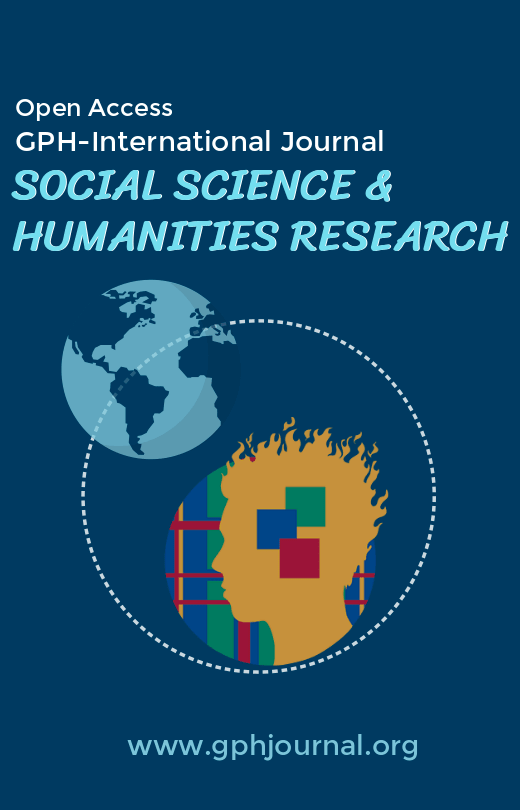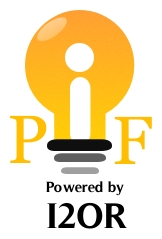VISITOR ATRACTION MARKETING ATTRIBUTES AND TOURISTS’ BEHAVIOURAL INTENTIONS TOWARDS THE GARDEN CITY OF PORT HARCOURT, RIVERS STATE NIGERIA
Abstract
The study examined the effect of Visitor Attraction (VA)marketing attributes (support services and activities) and tourists’ behavioural intentions in the tourism sector in Port Harcourt, Rivers State, Nigeria. The descriptive survey research generated primary data from a sample of 100 tourists/visitors who patronised the VAs selected for the study using a well-structured questionnaire containing nine items, with five demographic items. To validate the four hypothesised relationships, inferential statistics were conducted with the help of the Statistical Package for Social Science (SPSS). The result of the inferential statistical analysis showed that the two VA marketing attributes individually had a direct positive significant effect on tourists'/customers behavioural intentions. The study concluded that support services constitute an important factor that determines customers’ behavioural intentions such as revisiting the VAs for touristic purposes. It is recommended that entrepreneurs managing VA should identify, evaluate and provide support services at their sites based on their target market needs. Academic and practitioners’ implications are provided.
Downloads
References
Alexandris, K., Zahariadis, P., Tsorbatzoudis, C., &Grouios, G. (2004). An empirical investigation of the relationships among service quality, customer satisfaction and psychological com¬mitment in a health club context. European Sport Manage¬ment Quarterly, 4(1), 36–52. https://doi.org/10.1080/16184740408737466
Ali, F., Kim, W.G., Jun Li, J., & Jeon, H., (2016)Make it delightful: Customers' experience, satisfaction and loyalty in Malaysian theme parks. Journal of Destination Marketing & Management, http://dx.doi.org/10.1016/j.jdmm.2016.05.003i
Booker, N. (2005) Branding the Visitor Attraction Experience
Attract Marketing Ltd
Cronin, J. J., & Taylor, S. A. (1992). Measuring service quality: A re-examination and extension. Journal of Marketing, 56(3), 55.
Davidson, L., & Sibley, P. (2011). Audiences at the “new” museum: Visitor commitment, diversity and leisure at the museum of New Zealand Te Papa Tongarewa. Visitor Studies, 14(2), 176-194.
Ekeke, J.N & Etuk, J.S., (2021) E-Marketing and travellers’ brand choice in travel trade in Port Harcourt, Rivers State. International Journal of Academic Multidisciplinary Research, 5 (5), 82-94.
Ekeke, J.N., & Nzei, J. A.(2021)Hotel brand attributes and guest satisfaction: Evidence from Nigeria. European Journal of Research Development and Sustainability, 2.(2), 9-12.
Fornell C., &Larcker, D.F. (1981). Evaluating structural equation models with unobservable variables and measurement error. Journal of Market Research, 18(1), 39-50.
Hair, J. F., Black, W. C., Babin, B. J., & Anderson, R. E., (2010). Multivariate data analysis. New Delhi: Prentice Hall.
Jaffry, S., & Apostolakis, A. (2011). Evaluating individual preferences for the British Museum. Journal of culture economy, 35, 49-75.
Jiang, L. & Yang, Z.; Jun, M. (2012) Measuring consumer perceptions of online shopping convenience. J. Serv. Manag. 24, 191–214.
Kotler, P. (2003). Marketing Insights from A to Z: 80 Concepts Every Manager Needs to Know. John Wiley & Sons, Inc.
Kruczek (2012) Current trends in the development of tourist attractions. Being a conference paper retrieved MAY 10, 2019 from: https://www.researchgate.net/publication/233996695
Leiper, N., & Park, S-Y. (2011). Why the Gunarsa Art Museum fails as a tourism attraction. Tourism, Culture and Communication 11 (2), 71-82.
Moosa, M.Y & Hassan, Z. (2015). Customer Perceived Values associated with Automobile and Brand Loyalty. International Journal of Accounting, Business and Management, 3(1), 99-115.
Nunnally, J. C., & Bernstein, I. H. (1994).Psychometric theory. 3rd ed. Sydney,Australia McGraw Hill.
Oluyisola, O.O., George-Kayode, B.O. & Ajayi, O.O (2019). Perception of air transport safety by domestic air travellers. International Journal of Hospitality, Leisure and Tourism. 3(1/2), 55-65.
Orellana, D., Bregt, A. K., Ligtenberg, A., & Wachowicz, M. (2012). Exploring visitor movement patterns in natural recreational areas. Tourism Management, 33, 672-682.
Rivera, M. A., Shani, A., & Severt, D. (2009). Perceptions of service attributes in a religious theme site: An importance–satisfaction analysis. Journal of Heritage Tourism, 4(3), 227-243.
Swarbrooke, J. (2002). The development and management ofvisitor attractions (2nd ed.). Burlington, MA: Butterworth-Heinemann.
Sonari-Otobo, V.A & Ekeke, J.N.(2020)Airport marketing attributes and passengers’ word of mouth communication. Journal of Advanced Academic Research (Social and Management Sciences) 6, (10), 177-199. DOI: 10.46654/ij.24889849.s61015.
Pallant, J. (2005). SPSS Survival Manual. Buckingham: Open University Press.
Kang, G. Du., James, J., & Alexandris, K. (2002). Measurement of internal service quality: application if the SERVQUAL bat¬tery to internal service quality. Managing Service Quality, 12, 278–291. https://doi.org/10.1108/09604520210442065
Ladhari, R. (2009). Service quality, emotional satisfaction, and behavioural intentions: A study in the hotel industry. Managing Service Quality.Vol. 19 No. 3, pp. 308-331
Ryu, K., Lee, H.-R., & Kim, W. G. (2012). The influence of the quality of the physical environment, food, and service on restaurant image, customer perceived value, customer satisfaction, and behavioral intentions. International Journal of Contemporary Hospitality Management, 24(2), 200 - 223.
Uboegbulam, G. C & Ekeke, J. N (2021) Online Marketing Attributes and Hotel Guests’ Loyalty: Evidence from Nigeria, European Journal of Research Development and Sustainability2 (4) 9-18.
Wong, K.M & Musa, G (2011) Branding satisfaction in the Airline Industry: A Comparative Study of Malaysia Airlines and Air Asia. African Journal of Business Management.5(8) 3410-3423.
Zeithaml, V., Berry, L., & Parasuraman, A. (1996). The Behavioral Consequences of Service Quality. Journal of Marketing,60(2), 31-46. doi:10.2307/1251929
Copyright (c) 2022 Ubog AKOLOH-ISAAC, JOSEPHINE TIMIPRE & EKEKE, JOHN NDUBUEZE

This work is licensed under a Creative Commons Attribution-NonCommercial-NoDerivatives 4.0 International License.
Author(s) and co-author(s) jointly and severally represent and warrant that the Article is original with the author(s) and does not infringe any copyright or violate any other right of any third parties, and that the Article has not been published elsewhere. Author(s) agree to the terms that the GPH Journal will have the full right to remove the published article on any misconduct found in the published article.





























